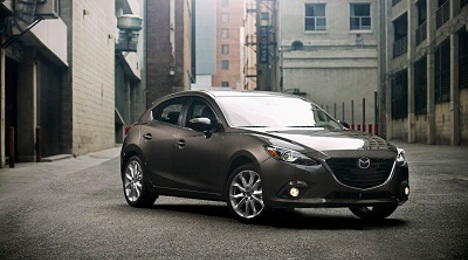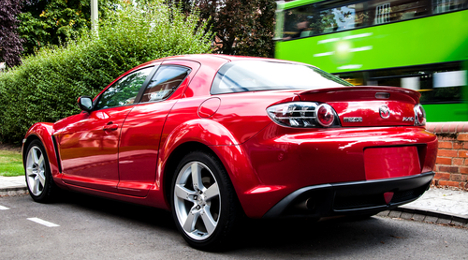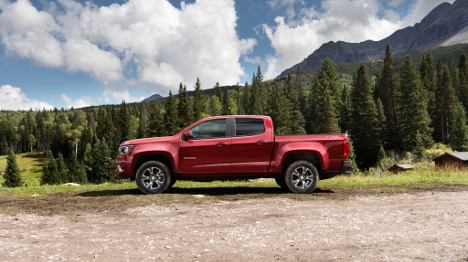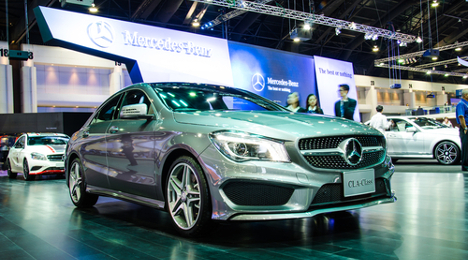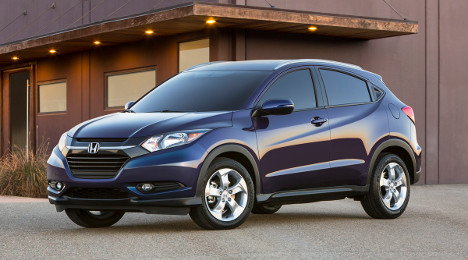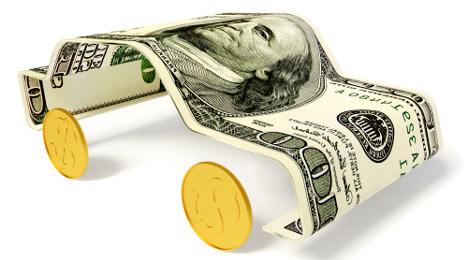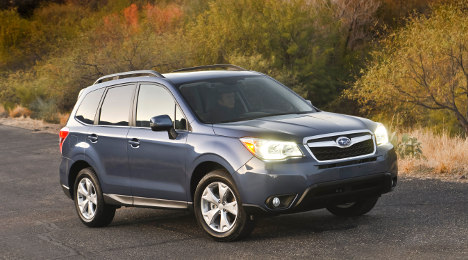Prices were on the way down at the auctions in May — by 0.6 percent month-over-month, according to RVI — but one segment, in particular took a much bigger hit.
According to RVI’s 2015 Q2 Risk Outlook Report, compact car prices suffered in the lanes in May, dropping by 9.6 percent year-over-year, while the market average was only a 3.3-percent dip.
And prices for the segment fell by 2.3 percent from April rates.
And while the market did see a slight drop in residual values in May, smaller vehicles took the biggest falls, while larger and more expensive vehicles performed better in terms of retention.
RVI analysts attribute the significant decline in compact car prices not only to market correction from tax season highs, but also lower gas prices and an improving economic climate, both of which the company contents has weakened demand for used compacts.
Instead, consumers are now turning to larger, more luxurious segments as pockets grow deeper.
And, of course, one cannot look at the current used price environment and not discuss used supply.
RVI reports the used supply of compact cars will continue to grow through May of 2017 before “leveling off,” which will contribute to continuing drops in price for the segment.
In fact, according to RVI, by 2018, compact used prices are expected to drop by 5.7 percent below current levels.
There is one redeeming factor when taking a look at future retention for compact vehicles — rising gas prices, which often turn consumers toward smaller, more fuel-efficient vehicles. But it might not be enough to turn the tides.
“Increasing gas prices will have a positive effect on residual values in the compact car segment. However, the increase of used vehicle supply in the segment along with rising incentives will lead to a decrease in used compact car prices,” RVI analysts said.
Taking a look at the RVI Used Vehicle Price Index, predictions show smaller segments will feel the pressure of the aforementioned factors come end of year.
The compact car segment is expected to end the year with prices down 6.9 percent from 2014 levels. And the subcompacts are expected to be behind 2014 levels by 7.4 percent.
The small sedan segment is also expected to take a hit, with rates predicted to end the year 5.3 percent below 2014 levels.
It seems as used supply expands, and consumers begin the feel the impact of an improving economy and predicted wage increases, the economy car might be giving up the limelight to some more expensive models.
Edmunds.com announced the winners of its fifth annual Best Retained Value Awards, and earning this year’s top honors for highest projected residuals were Toyota and Acura.
The awards spotlight the brands and 2015 models with the strongest projected five-year residual values. This is based on the vehicles’ “average ‘cash’ True Market Value (TMV) price during their first five months in the market, or for vehicles introduced in November or December of 2014, through March 2015,” Edmunds explained in a news release.
Toyota was the non-luxury division winner and had a projected five-year residual of 52.4 percent. Acura was tops on the luxury side with its 46.9 percent five-year residual.
There were also 24 segment awards to recognize individual models. Toyota took more spots than any other brand, with four winners.
The complete list of winners can be found on the Edmunds.com website.
To be eligible for the brand-level awards, brands had to have more than 100,000 unit sales last year and offer vehicles in at least four vehicle-type categories.
Models eligible for the awards included those that were from the 2015 model-year and launched by the end of 2014. Their February 2015 unit sales also had to be at least 25 percent of their respective segment average.
“Edmunds determined each model's category for the 2015 awards based on its body type segment; for certain categories, the size of the model within its body type segment; and for certain categories, the model's price and/or its competitive segment,” the company noted in its release.
To help explain how residual values are behaving, Manheim Consulting regularly shares a graph showcasing the Manheim Used Vehicle Value Index versus mix and quality adjusted New Vehicle Price Index computed by the U.S. Bureau of Labor Statistics (BLS).
Manheim chief economist Tom Webb said that the visual aid should show a general upward drift for residual values because, “If you assume that we don’t go back to some of those bad practices of the past, then I think the percentage level of around 47 percent is not unusual.”
The two specific bad practices Webb mentioned during his quarterly conference call earlier this week included automakers pushing thousands of new vehicles into rental fleets only to have them show up in the auction lanes less than six months later. He also touched on OEMs slapping thousands of incentives dollar on the hood in order for franchised dealers to turn that new metal.
Webb was then asked how the industry can keep residual values on that upward drift even while wholesale prices are softening at least moderately from some of the peaks seen about two years ago along with new-vehicle leasing penetration staying near 30 percent currently and for the foreseeable future.
“I’m hopeful (new-vehicle leasing) continues to go up just because it’s a better practice for the industry. I think it’s better for the customer in many instances as opposed to being in those long-term loans, which I do think have the potential for causing some customer dissatisfaction at some point,” Webb said.
Webb then pointed out that a higher lease penetration rate should not “in and of itself” impact residual values.
“As a matter of fact, if leasing is done right, it should protect residual values. It should not reduce it,” he said. “The problem is, as you well know, because there are economic cycles your peak originations are going to occur at the top of the economic cycle and your peak off-lease volumes may very well occur at the trough. That’s the risk that you take as a lessor.
“But to the extent that we have more stable new-vehicle sales cycles, they’re mitigating some of that risk also,” Webb went on to say.
Diversity in the Rental Lanes
In another part of his quarterly presentation, Webb offered a breakdown of how rich the vehicle diversity is becoming in the rental-risk unit channel.
In the first quarter of 2013, Manheim determined there were 2,598 unique year, make, model, body configurations remarketed by the wholesale industry. This past quarter, the figure jumped to 3,623.
Furthermore, Webb mentioned the number of unique year, make, model, body configurations it took to reach 50 percent share of the rental-risk volume rose from 57 in Q1 of 2013 to 88 in Q1 of this year.
“It’s a good opportunity for dealers to acquire nice inventory,” Webb said of used-car managers hunting the off-rental lanes. “The shift away from having the rental fleets composed of vehicles that were stripped down in terms of options is something that really ended a long time ago.
“What that particular chart shows is more the diversity of the mix in terms of makes and models out there as opposed to being concentrated in what you might term, ‘the rental vehicle’ that we had in the past,” he continued. “There are a lot of different makes and models.”
To illustrate his point further, Webb touched on three specific vehicle categories dealers can find in off-rental lanes that might not have been so prominent in the past.
“Certainly in recent years, the rental car companies have done quite well with some of the smaller crossovers in their rental fleets because customers like them to rent and they also had good residuals when they came back,” Webb said. “Right now, some of the luxury high-end SUVs coming out of the rental fleets are also commanding good prices as are minivans.
“Of course, you have your bread and butter midsize cars, which are still the bulk of the rental fleet. But you still have a lot of different makes models and styles,” he added.
Another Thought on Dealer Profits
An earlier report from Auto Remarketing detailed why Webb contends retail demand is the primary driver as to why wholesale prices haven’t soften more. Webb further quantified his assessment by sharing a figure — 99.9 percent — especially if used-car managers are still frustrated by what they’re paying on the block to fill inventory.
“I would say that with 99.9 percent of these purchases (dealers) end up making a profit on the subsequent retail sale so they can continue to bid up,” Webb said.
“I would also think — but it might be harder to quantify — to the extent that dealers have increased their efficiencies and turn rates and they still have great F&I opportunities, that allows them to bid because to a certain extent there’s less of a risk premium in terms of what the pricing is. Certainly if they’re turning the unit quickly, they’re confident of that gross they’re going to achieve,” he went on to say.
The effects of a recall can do quite a bit more harm to a vehicle’s image than the immediate problems they typically cause – they can also dramatically accelerate their rate of value depreciation.
That’s according to the analysts at iSeeCars.com, who recently released the results of a study they conducted to see the effect of a specific situation, the Takata airbag recall, on the depreciation rate of the vehicles they were in.
Their findings are staggering – according to their results, based on an analysis of over 19 million used vehicles including vehicles recalled for potential issues with Takata airbags and comparable, unaffected models, the affected vehicles saw an average of 2.2 times higher price drops than vehicles not under the airbag recall.
Based on data during the recall period, from Oct. 2014 to Feb. 2015, Takata-affected vehicles saw a price decline of 7.1 percent year-over-year, compared to a 3.2 percent decline in price for vehicles not affected.
“It seems like the dramatic risk of injury associated with these defective airbags may have led to a decrease in perceived value,” said Phong Ly, iSeeCars.com’s chief executive officer. “Since most consumers trade in their cars rather than sell them privately, it means they’re getting hit even harder on their trade-in values.”
The study also narrowed its focus to identify the individual vehicles hit hardest by these perceptions, noticing that the average price decline for the top-10 models ranged from 1.3 to 3.5 times more than the average decline for similar vehicles not subject to the same recall. Here is that list, provided by iSeeCars.com.
10 Takata-Recalled Cars With the Biggest Price Drops
|
Rank
|
Takata-Affected Model
|
Model Years
|
% Avg Price Change YOY
|
% Avg Price Change YOY
for Similar Cars
|
Price Drop Compared With Similar Cars
|
|
1
|
Mazda RX-8
|
2004–2008
|
−12.0%
|
−3.4%
|
3.5x Greater
|
|
2
|
Infiniti FX35/45
|
2003–2005
|
−13.0%
|
−5.1%
|
2.6x
|
|
3
|
BMW 3 Series*
|
2000–2006
|
−13.4%
|
−7.1%
|
1.9x
|
|
4
|
Dodge Dakota
|
2005–2008
|
−7.2%
|
−4.0%
|
1.8x
|
|
5
|
Toyota Tundra
|
2003–2005
|
−7.5%
|
−4.9%
|
1.5x
|
|
6
|
Nissan Maxima
|
2001–2003
|
−12.5%
|
−8.8%
|
1.4x
|
|
7
|
Honda CR-V
|
2002–2006
|
−11.6%
|
−8.8%
|
1.3x
|
|
8
|
BMW M3
|
2001–2006
|
−9.2%
|
−7.0%
|
1.3x
|
|
9
|
Dodge Durango
|
2005–2008
|
−11.6%
|
−9.1%
|
1.3x
|
|
10
|
Honda Pilot
|
2003–2007
|
−11.5%
|
−9.1%
|
1.3x
|
* Coupe and convertible.
Kelley Blue Book revealed this morning the 2015 winners of the annual Best Resale Value Awards, peppered this time around with trucks, SUVs and crossover models.
“The entire list of Top 10 Best Resale Value vehicles is dominated this year by trucks, SUVs and crossovers, which is a testament to the strength these categories will carry in the future,” said Eric Ibara, director of residual value consulting for Kelley Blue Book.
Top brand honors were given to Subaru and Lexus, for best brand and best luxury brand, respectively.
This year’s model-year brand and category winners of the awards — which recognize vehicles for their projected retained value through the initial five-year ownership period — were dominated by the two top brands, as well.
Out of the 22 vehicle segments, Subaru took home three model awards for its Legacy, Impreza and WRX. Lexus, on the other hand, was honored for six of its models, including GX 460 and the LX 570.
“Lexus notably captured the top luxury brand honors for the fourth year in a row, and after previously winning the brand award in 2011, Subaru is back on top again for 2015 as the best mainstream brand for resale value across its entire lineup,” said Ibara.
The domestics made an impressive showing, as well, with Chevrolet notching five model awards and GMC taking home two, and more than half of the Top 10 models hail from domestic manufacturers.
“While both Subaru and Lexus deliver incredible resale value, we also are impressed with the strides made by General Motors, which tops domestic automakers with seven combined awards for Chevrolet and GMC,” Ibara said.
Though these are the top performers when it comes to price retention, KBB also touched on the industry average.
An average 2015 model-year vehicle only will retain about 38.2 percent of its original value after a five-year ownership period, according to KBB.
See below for the full lineup of winners for KBB’s 13th annual Best Resale Value Awards, which are based on projections from the Kelley Blue Book Official Residual Value Guide.
2015 Best Resale Value: Brand
Subaru
2015 Best Resale Value: Luxury Brand
Lexus
2015 Best Resale Value: Top 10 Cars
Chevrolet Colorado
Honda CR-V
Chevrolet Silverado
Jeep Wrangler
Ford F-150
Toyota Tacoma
GMC Canyon
Toyota Tundra
GMC Sierra
Toyota 4Runner
2015 Best Resale Value: By Vehicle Category
Subcompact Car: Honda Fit
Plug-In Vehicle: Porsche Cayenne S E-Hybrid
Compact Car: Subaru Impreza
Compact SUV/Crossover: Jeep Wrangler
Sporty Compact Cars: Subaru WRX
Mid-Size SUV/Crossover: Jeep Wrangler Unlimited
Mid-Size Car: Subaru Legacy
Full-Size SUV/Crossover: Chevrolet Suburban
Full-size Car: Dodge Charger
Luxury Compact SUV/Crossover: Mercedes-Benz GLK-Class
Entry-Level Luxury Car: Lexus RC 350
Luxury Mid-Size SUV/Crossover: Lexus GX 460
Luxury Car: Lexus GS 350
Luxury Full-Size SUV/Crossover: Lexus LX 570
High-End Luxury Car: Lexus LS 460
Hybrid SUV/Crossover: Lexus RX 450h
Sports Car: Chevrolet Camaro V6
Mid-Size Pickup Truck: Toyota Tacoma
High Performance Car: Chevrolet Corvette
Full-Size Pickup Truck: Toyota Tundra
Hybrid/Alternative Energy Car: Toyota Camry Hybrid
Minivan/Van: Toyota Sienna
The November 2014 issue of the NADA Used Car Guide's Perspective featured a retention review, outlining the value retention of several luxury vehicles that are either all-new or heavily revised for the 2014 model year.
In the Retention Review, the NADA used retention calculation based on a three-month average (September through November of this year) of NADA’s average trade-in value divided by the vehicle’s typically equipped MSRP, sourced from data from ALG and the NADA Used Car Guide. The company noted that the MSRPs provided do not include any incentives or rebates available at the time of purchase.
The following data was provided by the NADA via the November edition of Perspective.
2014 Luxury Mid-Size Utility Average 1-Year Retention = 72 percent
- 2014 Acura MDX Technology 4WD 3.5L V6 1-Year Retention = 79.8 percent
- 2014 BMW X5 35i AWD 3.0L I6 Turbo 1-Year Retention = 80.8 percent
Both the BMW X5 and Acura MDX retained a better-than-average percentage of value when compared to their segment’s average retention, while both also increased their value retention over their comparable 2013 models.
2014 Luxury Mid-Size Car Average 1-Year Retention = 66.6 percent
- 2014 Acura RLX Technology 3.5L V6 1-Year Retention = 61.3 percent
- 2014 Cadillac CTS Luxury 3.6L V6 1-Year Retention = 60.9 percent
Setting a different tone, both the Acura and the Cadillac mid-sized cars listed above retained less value after a year when compared to other vehicles in their class that did not undergo a redesign for 2014; while the RLX was all-new for 2014, the CTS lost 5.9 percentage points when compared to its comparable 2013 version (which retained 66.7 percent of its value after one year).
2014 Upper Sport Car Average 1-Year Retention = 71.8 percent
- 2014 BMW 4 Series Coupe 428i 2.0L I4 Turbo 1-Year Retention = 72.3 percent
- 2014 Jaguar F-Type Convertible Base 3.0L V6 SC 1-Year Retention = 70.7 percent
Both all-new for 2014, the 4 Series Coupe 428i and the Jaguar F-Type base convertible performed near-average for their segment, with the BMW retaining a slightly higher amount of its value after one year than average and the Jaguar slightly below the segment average.
2014 Luxury Sport Car Average 1-Year Retention = 70.3 percent
- 2014 Cadillac ELR Luxury 1.4L I4 Electric/Hybrid 1-Year Retention = 59.7 percent
The only all-new model in its segment, the ELR did not perform too well against its competitors, retaining more than 10 percent less of its value after one year compared to others in its category that did not undergo many changes for 2014.
2014 Near-Luxury Car Average 1-Year Retention = 67 percent
- 2014 Infiniti Q50 Premium 3.7L V6 1-Year Retention = 72.4 percent
- 2014 Lexus IS 250 2.5L V6 1-Year Retention = 75.3 percent
- 2014 Mercedes-Benz CLA250 2.0L I4 Turbo 1-Year Retention = 81.4 percent
Mercedes-Benz’ all-new CLA250 and first-ever front-wheel-drive only vehicle is the highlight of this segment, retaining far more of its value than any of its competitors. The all-new Q50 and the refreshed IS 250 held their own, as well, retaining significantly more of their value when compared to the segment average, although the IS 250 did lose .3 percentage points compared to the 2013 model’s residual value after a year.
For a more in-depth look at each of these models and their strengths/weaknesses, check out the NADA’s Perspective.
With the Los Angeles Auto Show in high gear this week and new models launching, ALG — the analytics division of TrueCar — has shared some data and analysis on how well these vehicles may hold their respective values.
Below is ALG’s data as well as thoughts from vice president of industry insights Eric Lyman on more than a dozen different models.
Note, per ALG: Residual values are on 2015 model-year vehicles, based on the November/December edition and are trim mix weighted.
Infiniti Q80 Inspiration Concept
On average, 2015 model-year vehicles in the premium executive segment command a residual value of 44.0 percent. The ALG Residual Value Award winner in the segment, the Porsche Panamera, is at 47.1 percent.
As for the Infiniti Q80 Inspiration Concept, Lyman said: “Infiniti has been pondering a return to the premium executive segment for a while, and the brand views it as a way to match the cachet of the leaders from Germany and Lexus.
“It’s a very tough competitive set, but Infiniti maybe have a chance to make an impact with innovative thinking on powertrains and autonomous driving capability, with advanced technology being one of the best ways to honor the legacy of the Q45,” he said.
Scion iM Concept
The average residual value for the subcompact utility segment is at 50.2 percent, with the ALG RVA winner (MINI Countryman) at 51.7 percent. The Scion xB is at 52.1 percent.
“While the first generation xB was a surprise hit, the follow-up never really caught on,” Lyman said. “In fact, Scion has been in need of a brand overhaul, and the original pattern of bringing over Japanese market cars for U.S. consumption has fizzled.
“It looks like Toyota may be trying this tack with its European products, which has worked well for some brands, particularly Ford.”
Volvo XC90 (Model-Year 2015)
This model is projected to command a 43.1 percent residual value, compared to a 53.5 percent average for the premium midsize utility three-row segment and 58.2-percent residual value for the Lexus GX, the RVA winner.
“The original XC90 was a roaring success when it debuted in a relatively young midsize luxury crossover segment,” Lyman said. “This second-generation will serve as Volvo’s new flagship, with a fresh design language — especially on the inside — and infotainment and safety equipment that will set the tone for the Volvo brand going forward.”
Kia Sorento (Model-Year 2016)
Next up, the Kia Sorento’s latest iteration is expected to have a 46.8 percent residual value, versus the midsize utility third-row seating average of 51.3 percent and a 58.9 percent value for the RVA winning Toyota Highlander.
“Kia’s Sorento has been stuck in between segments for its entire life, but that’s about to change with the latest version, which is set to compete as a real midsizer,” said Lyman. “While the second generation was a big leap forward in terms of styling, this latest model combines know-how from three different continents to create one of the most compelling styling statements we’ve seen from Kia.”
Mercedes-AMG GT (Model-Year 2016)
In the Mercedes-AMG GT’s segment (premium sports car), the average residual value is 49.5 percent and the RVA winner (Audi TT) had a 54.4 percent residual.
Lyman said: “The SLS Gullwing is a particularly tough act to follow, but if the AMG GT is truly meant to be a 911 competitor, then its significantly lower pricing will be its ace in the hole. The GT further refines the cab-rearward styling language of the SLS, and introduces the new 4.0L turbo engine, which is the next generation core powertrain for AMG, so it will be a great flagship for the new Mercedes-AMG lineup.”
Jaguar XE (Model-Year 2017)
Next up, the premium midsize segment had an residual of 47.8 percent, with the RVA-winning Lexus IS at 51.6 percent.
So what about the Jaguar XE?
“In contrast to some other brands which have difficulty sustaining viable flagship models, Jaguar has had a tough time playing at the lower end of the market,” Lyman said. “Its average transaction price is above $80,000, so its center of gravity is significantly higher than other luxury brands, even top-tier marques like Mercedes.
“When Jaguar shifts it focus with the new XE, it’ll settle the question of whether the Brits can play in the most competitive segment in the luxury sector,” he added.
Land Rover Discovery Sport (Model-Year 2015)
ALG’s analysis indicates that the premium compact utility segment has an average residual of 49.9 percent, with the RVA-winning Porsche Macan at 55.4 percent. The Land Rover LR 2 is at 48.1 percent.
As for the Land Rover Discover Sport, Lyman had this to say: “Land Rover’s lineup is particularly strong with the Range Rover models, each of which finished on the podium in our Residual Value Awards, but the LR2 has been a laggard in this respect. The Discovery Sport reintroduces a great name to the lineup in the U.S., breaking the mold of luxury alphanumerics, and it gives Land Rover a chance to establish a second great sub-brand.”
MINI Hardtop 5-Door (Model-Year 2015)
In this segment (the premium compact), the average residual is 50.6 percent, but the MINI Hardtop led the pack at 52.8 percent, ALG indicated.
“Several years ago when Jeep introduced the Wrangler Unlimited, it was a natural extension of the nameplate that opened up an entire lifestyle to a new segment of the population,” Lyman noted. “While MINI has done that to some extent with variants like the Clubman and Countryman, this new 5-door keeps more of the classic MINI shape, while allowing for more usability, and it could be a dream come true for many buyers.”
Honda HR-V (Model-Year 2015)
Diving into the subcompact utility segment, this class had an average residual value of 50.2 percent. The MINI Countryman was the latest RVA winner (51.7 percent). The Honda Fit was at 57.1 percent.
“Like many small vehicle segments, subcompact utility is growing rapidly, and Honda’s brand is a perfect fit for a new entry,” Lyman said. “The Fit’s platform is a great place to start, with light weight, sporty handling and great utility, and the HR-V should kick that utility factor up a whole order of magnitude.”
Mazda MX-5 Miata (Model-Year 2016)
In the sports car class (which pulled in a 49.1 percent average residual), the leader was the Subaru WRX (57.7 percent). The Mazda Miata had a 51.1 percent residual.
“The MX-5 has long been one of the purest-driving cars on the road, and one of the secret loves of auto enthusiasts,” Lyman said. “But Mazda wants those buyers to go more public with their admiration, giving the latest model more masculine styling that will have broader appeal, while also giving it the tech and refinement that brings it up to speed with the rest of Mazda’s lineup.”
Land Rover Range Rover Sport SVR (Model-Year 2015)
The premium midsize utility second-row seating segment had and average residual value of 48.6 percent, with the RVA winner being the Land Rover Range Rover Sport (55.9 percent).
“With nearly every luxury marque having a distinct performance unit now, Land Rover couldn’t resist jumping into the fray with the first of its SVR models,” Lyman said. “It’s good for the brand, helping to bolster its performance credentials just as it has for the Germans, and once JLR’s Special Vehicle Operations becomes established, these models will have big resale premiums.”
Tesla Model S D (Model-Year 2015)
Next up, the residual value average for the alternative-fuel segment was 46.4 percent, with the RVA-winning Toyota Prius v at 50.1 percent.
Here’s what Lyman had to say about the Model S D: “While the Model S’s performance was already impressive, Tesla has kicked it up to supercar levels for the P85D, with dual motors imparting AWD and a 3.2-second 0-60 time — the same as for a Porsche 911 Turbo! If the company continues to introduce advancements like this, the cult of Tesla will continue to grow.”
Mazda CX-3 (Model-Year 2015)
As mentioned earlier in the analysis, subcompact utilities pull an average residual value of 50.2 percent, and RVA winner MINI Countryman is at 51.7 percent. The Mazda CX-5 had a residual of 49.0 percent.
In a segment Lyman said is “exploding,” here are his thoughts on the Mazda CX-3.
“The number of entries in the subcompact utility segment is exploding, with Jeep, Honda, Chevy, Fiat and Mazda all jumping in within the next year and a half,” he said. “Based on Mazda’s recent track record, though, the CX-3 should be one of the best entries in the category, with great styling and dynamics, and an efficient SkyActiv powertrain.”
Ford Explorer (Model-Year 2016)
In Lyman’s last bit of analysis, he looks at the Ford Explorer, which has a residual value of 51.2 percent. That compares evenly to a 51.3 percent average for the midsize utility third-row seating segment. As a comparison, the Toyota Highlander’s residual was at 58.9 percent.
“The Explorer is still selling like gangbusters, with nearly 200,000 sales last year,” Lyman noted. “Ford will try to keep this momentum up with a refresh for 2016, and they’re expected to upgrade the EcoBoost engine, in addition to the increased driver-assist equipment they’ve alluded to.”
Lastly, while there wasn’t commentary on the Fiat 500X, ALG’s analysis did note the Fiat 500L had 42.8 percent residuals, with subcompact utilities at 50.2 percent.
Strategic Vision has added a new wrinkle to its Total Value Index study, the latest results of which were released Tuesday.
Blended with the new-car owner input in this latest batch of rankings — including measures like expected reliability, expected MPG, price paid and so forth — is residual value information provided by ALG.
“Value will increasingly be reflected by shopper/owner perceptions and experiences of innovation as manufacturers become more competitive, but it also required the normalizing factor of ALG’s important residual values,” said Strategic Vision president Alexander Edwards.
ALG president Larry Dominique added: “Essentially, we now have a ‘super metric’ that reflects both the consumer’s and investor’s perspective in one powerful measure that has impact today and reflects how future sales will be influenced.”
Among the OEM groups, leading the pack were Volkswagen Group — which had five segment leaders in the Audi A7, Audi Q5, VW Beetle Convertible and VW Tiguan — and Hyundai Motor Corp., whose Hyundai Sonata Hybrid and Kia Soul were segment leaders. These two OEMs tied for producing the highest Total Value on a corporate level.
Interestingly enough, Strategic Vision said there was no one brand that “dominated,” highlighting the parity it believes exists among automakers. What’s more there were nine domestic-brand segment winners, eight European-brand segment winners and 13 Asian-brand segment winners.
One of the 30 winning models the company highlighted in its announcement was the Soul, which was the leader in the Small Multi-Function car segment. The Soul actually tied for the lead in this segment in another Strategic Vision award, the Total Quality Index, which was released this summer.
“If you take the Kia Soul into consideration, it was the Total Quality leader in another study and now reveals a segment leading score in Total Value. Kia Soul includes fresh attractive styling, great quality and MPG, with innovative features that are generating love among its owners. Ultimately this love translates into loyalty and advocacy, and will drive sales,” said Christopher Chaney, Strategic Vision senior vice president.
To determine the winners in the 19th annual Total Value Index study, Strategic Vision studied more than 46,000 consumers who bought 2014 model-year new vehicles between October 2014 and March.
The company said in its announcement that it “examined the quality of the buyer’s complete ownership experience and adds the customer’s assessment of economic consequences from two perspectives: (1) Immediate – or what is influential today (e.g. total down payment including drive-off costs, warranty costs, special incentive programs, etc.), and (2) Expected – what they believe the costs that emerge over time will be (e.g. expected Reliability and Durability, Resale Value, Durability, Fuel Economy, etc.)”
The complete list of Total Value Index winners includes the top-ranked vehicle for Total Value in each segment, as rated by new-car buyers with ALG residual values included.
If you need an extra push to move compact SUVs, here’s one selling point that may help: they hold their value tremendously well.
That was one of several reasons mentioned in a new series from senior analyst Jessica Caldwell and the team at Edmunds.com explaining why this segment’s growth has been so rapid — and perhaps far from over.
In the first entry to the “Key Insights” series, the Edmunds’ analysts point out that the resale values for the five best-sellers in the compact SUV segment are “well above the industry median.”
In fact, the Honda CR-V has a five-year resale value of 50.7 percent, which Edmunds says is one of the best in the business.
High resale values, of course, aren’t the only drivers to compact SUV’s strong sales. Industry-leading conquest rates, their popularity among women and drivers over 55, as well as their balance of key attributes (space, cost, gas mileage and ride height) also play a big role.
Commercial Vans & Their Strong Values
In a similar analysis, ALG moved over to the residual value side of the equation — and examined a segment that’s often overlooked.
The ALG Industry Report for September goes in-depth on the latest iteration of full-size commercial vans, sharing 36-month residual value projections for the 2015 editions of the Ford Transit, Mercedes-Benz Sprinter and the Ram ProMaster.
The Sprinter is projected to command a residual value of 52 percent, with the ProMaster at 49 percent and the Transit at 47 percent.
Additionally, ALG notes that all three of these vehicles beat the average residuals for their respective brands (Mercedes-Benz at 48 percent, Ram at 45 percent and Ford at 46 percent).
“Escalating fuel prices have placed greater importance on fuel economy for commercial fleet owners,” said Larry Dominique, president of ALG and executive vice president of TrueCar. “These three European-style vans feature lighter-weight construction and better fuel-efficiency than their predecessors.
“By improving fuel efficiency from an average of 14 mpg from a few years back to nearly 20 mpg today, U.S. Business owners will save hundreds of millions of dollars each year,” he added. “The market for full-size vans has pent-up demand for vehicles with lower running costs. Businesses are thinking about the entire cost-of-ownership picture now more than ever, and, finally, automakers are responding.”
Speaking of fleet ownership costs, Auto Remarketing shares more detail on this topic with our story recapping the “Lifestyle Cost Management: 36-Month Versus 60-Month Sedan Lifecycle Cost Analysis” report from fleet management company Donlen.
With leasing continuing to gain momentum, CNW Research compared the contract residual value projection with the likely actual value at the end of term.
In the August Retail Automotive Summary, firm analysts found that last month’s industry average settled at 85.88 percent — a figure representing the difference between the actual contract and the eventual actual sale price. That average has been on a steady rise since the beginning of the year when CNW pegged it at 84.65 percent back in January.
Of the six automakers included in the latest report, three brands had their level come in above the average mark, and three other badges settle below it.
The trio that jumped above the average included:
— Ford: 86.79 percent
— Chrysler: 86.70 percent
— Honda: 86.01 percent
The three brands that fell below the average were:
— Toyota: 85.76 percent
— Nissan: 85.13 percent
— General Motors: 81.52 percent
While the other five OEMs have either held steady or ticked up slightly since the beginning of the year, GM’s reading has declined during six of the past seven months. GM started the year at 83.59 percent, according to CNW.

